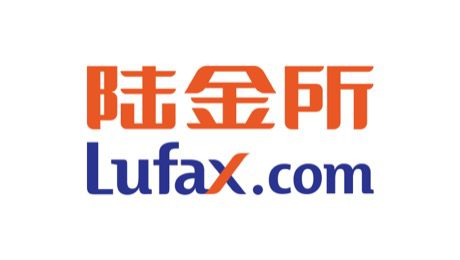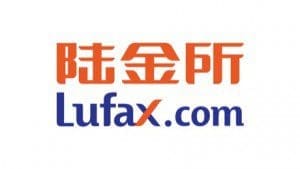A couple of weeks from now Greg Gibb, the Chairman of Lufax, will be taking the main stage at LendIt to introduce his firm to the online lending world and show everyone what it looks like when a major financial institution decides to organically build a P2P firm.
In less than three years, Lufax is already the world’s third largest P2P firm and it is easily the fastest growing. By throwing the weight of Ping An Insurance behind it, Lufax is on a trajectory to pull away from everyone and redefine P2P’s position within the greater financial services community.
A lot of people often ask the question, will the banks ever enter the P2P market? If a bank were to ever get serious about P2P, their first step should be to study the Ping An-Lufax playbook and learn from this huge success story.
My partner, Jason Jones, will be conducting a fireside chat with Greg at LendIt and he sent along a few question to the Lufax team in order to set the stage.
Q: What is Lufax and why did Ping An Insurance Company of China create it?
A: Lufax offers a broad set of online P2P driven financial services that are at the forefront of consumer lending, commercial banking and investment banking services for individuals and businesses. Founded in 2012, Lufax has revolutionized the way individuals and companies in China think about financing, through financial innovation and sound risk management.
Ping An Group created Lufax based on a desire to better connect individuals and business that need funding with investors who are looking for investment opportunities. Lufax is a key part of Ping An Group’s Internet finance strategy and helps drive business for the company’s wealth management division.
Q: What are some Lufax stats: the size of your operation? total number of employees? total revenue? total origination dollar volume? growth rates? Etc.
A: Lufax has experienced amazing growth since the company launched in 2012. The company grew online originations from 151m yuan ($24m) in 2012 to 3.3b yuan ($528m) in 2013 for an amazing 2100% growth and originated 14b yuan ($2.3b) in 2014 for an additional 335% growth. In 2014, the total transaction volume of financial assets on the Lufax platform increased by close to 7 times YoY with 9b yuan ($1.4b) unsecured and 5b yuan ($800m) secured. Specifically, retail transaction volume increased by close to 20 times YoY, while institutional transaction volume increased by close to 67 times YoY. Our P2P trading volume increased by close to 7 times YoY. This growth places Lufax ahead of every P2P platform in the world in total transaction volume, except CreditEase and Lending Club. Lufax now has 5.3 million registered users and close to 3,000 employees.
Q: What is the current size of the Chinese P2P market and how does Lufax differentiate itself?
A: The P2P market in China is huge and growing rapidly. According to third party information, in 2014, the number of P2P platforms in China exceeded 1,500 and total trading volume in the past two years reached one hundred billion yuan ($16b).
The true differentiator between Lufax and other players in the China P2P market is the foundation of trust, innovation and an open-ecosystem of lending and borrowing solutions that the company is built on. As a division of Ping An, which is one of China’s largest insurance companies, Lufax uses Ping An’s balance sheet to guarantee all of its loans, a foundation of trust and security that no other Chinese P2P player can claim. Lufax is always innovating and, in a bid to guide healthy development of the P2P industry in China, pursues business innovation with strict risk controls in place.
Q: How do you price risk without having a national credit bureau in China?
A: To be clear here, there is a national credit bureau and we are one of the few P2P companies with access to it, however the credit bureau has only a limited amount of the population covered. Where customers have bureau data we use it as an input into our credit underwriting.
For all of our borrowers we rate them through an innovative and proprietary risk model. Our risk control model for retail lending contains a detailed list of reference factors including borrowers’ education background, occupation, job stability and the purpose of the loan. If a borrower’s application is approved after our review, we will allocate interest rates, loan limits, etc. to them according to the rating our system has given them.
Given the large quantity and complexity of institutional transactions, we not only price risk through our proprietary model, but also survey a company’s operations, drawdown, business teams’ capabilities, etc. For financial institutions, we survey their risk control performance and whether they can control bad loans. Regarding institutional business investment, we factor in whether the institution is capable of risk management.
As for charge-offs, across our entire history of originations, which total about 17b yuan ($2.7b), we have experienced 460m yuan ($73m) in charge-offs with about 4% for unsecured and 0% for secured. We expect unsecured to stabilize around 6% through the tenor cycle and secured to remain below 0.3%.
Q: Describe Lufax’s products
A: The Lufax platform primarily offers P2P investment products and wealth management products. Specifically, P2P investment products include:
- “WenYing-An-e” is an unsecured P2P loan with average maturity of 1-3 years. Its minimum investment is RMB10k and the expected annualized interest rate is 7.84% or above. Given that investors may have liquidity needs, we established a secondary market for the trading of such products.

- “WenYing-AnYe” is a real-estate-mortgaged investment product with an average maturity of 3-12 months. Its minimum investment is RMB250k. The expected annualized yield rate is 7.5%-7.8%. “WenYing-AnYe” also features full guarantee of principal and interest by third-party guarantee companies.
- Lufax wealth management products include “FuYing RenSheng” and “Exclusive Wealth Management”. “FuYing RenSheng” is an investment product for senior citizens, with a minimum investment amount of RMB1000 and expected annual return rate of more than 5.5%. Investment maturity ranges from 3 to 12 months.

- “Exclusive Wealth Management” is an investment and wealth management service provided by Lufax for certified members. Minimum investment is RMB100k with investment maturity ranging from 1 to 12 months. The expected annual return rate is 15%-20% higher than banking wealth management products with the same maturity.

Q: Explain how Lufax P2P operates as a lead generator for other Ping An wealth management and insurance solutions.
A: Lufax attracts investors for the asset management and insurance businesses of Ping An Group through the Internet-based financial platform, structured innovation and professional consulting services. Lufax serves as an information intermediary, trading facilitator or financial advisor in trading financial assets. Though it itself does not participate in the trading, it plays a key role in effecting a transaction. The Lufax platform can help Ping An Group realize financial innovation, liquidate assets and increase liquidity by using the Internet-based financial platform.
For more information about Lufax, check out this 4 minute video from Bloomberg: Lufax CEO Gibb on China Peer-to-Peer Financing
And then watch Greg speak at LendIt and on LendIt.tv on April 14 at 4:05pm ET to learn more about his fascinating business.



